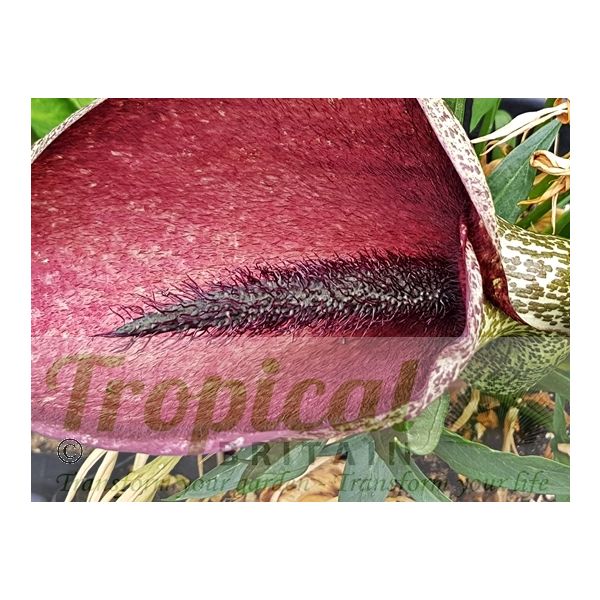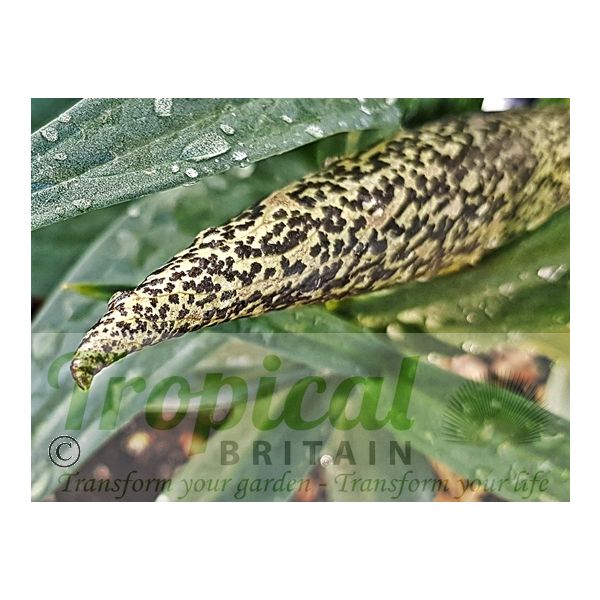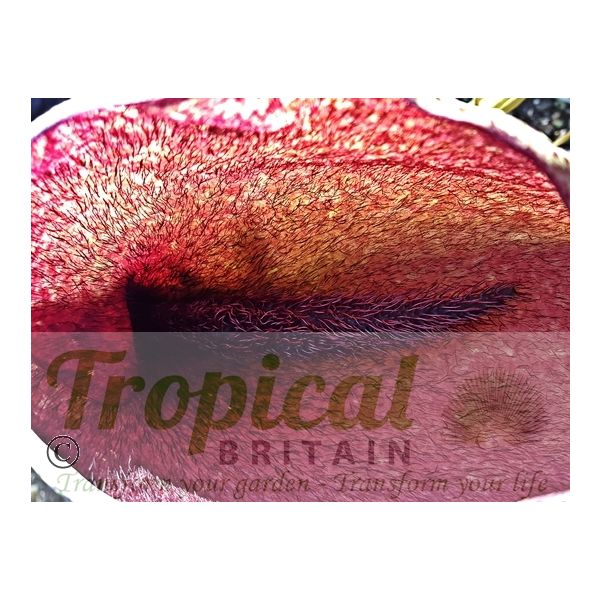Helicodiceros muscivorus
Helicodiceros muscivorus, Dead Horse Arum, is found only on the Mediterranean islands of Sardinia, Corsica and the Balearics where it grows in pockets of well-drained gritty soil nestled amongst the rocks along the coastal foreshore. It is one of the most extraordinary plants on the face of planet Earth. The superlative olfactory experiences of Mediterranean aroids are all too well-known and the malodorous aroma of Helicodiceros musciveros - reminiscent of Arum dioscoridis on a warm day - is no great surprise to the aroid aficionado but this is a plant that also uses visual mimicry and nothing can quite prepare you for the full uncensored sight of the inflorescence - pink and hairy in all its supine glory like the rear-end of a mammalian corpse. The large flesh-pink spathe - mottled in brown - is covered in dark hairs and the hairy spadix, protruding like a tail from an orifice gives a near perfect impersonation. But that is not all. Helicodiceros musciveros generates its own heat as if the corpse is still fresh. Flies gather in morbid thrall to this vegetative anus, washed up still-warm on their shores or perhaps tumbled from the cliffs above.
It is one of those curiously compelling tales of evolutionary refinement. Dead Horse Arum has evolved a reproductive strategy that uses both olfactory and visual deceit together with thermogenesis to mimic a mammalian cadaver. Ovipositing blowflies, in search of an ideal place to lay their eggs are attracted by the putrid smell, the flesh-like appearance and the warmth and are tricked into becoming pollinators. They get nothing in return.
An easy plant to cultivate, its upwardly trifoliate leaves - resembling high-stepping bird's feet - appear in autumn and the unforgettable inflorescence usually forms in late winter or early spring, starting as a long pointed snake-like bud, mottled green and dark-purplish brown. After it has finished fooling the flies it remains in foliage throughout the spring and early summer before dying back and going dormant in summer when it should be rested and kept dry.
These are sold as growing plants in 1 litre pots, not as tubers. Limited quantities. Rarely available.
Additional Information
| Order | Alismatales |
|---|---|
| Family | Araceae |
| Sub-Family | Aroideae |
| Synonyms | Arum crinitum, Arum muscivorum, Arum spirale, Dracunculus crinitus, Dracunculus muscivorus, Dracunculus muscivorus var. caprariensis, Helicodiceros crinitus, Megotigea crinita |
| Geographical Origin | Mediterranean: Sardinia, Corsica, Balearic Islands |
| Cultivation | Full sun or dappled shade. A rich soil that is also well-drained with lots of grit and gravel. A sheltered wind-free aspect will be an advantage when it is flowering. Keep dry in summer. Suitable for container culture |
| Eventual Height | 80-100cm |
| Eventual Spread | 60 cm |
| Hardiness | Hardy in much of the UK providing it has a well-drained soil. A bark or grit mulch is sensible to keep the tuber insulated. If grown in a container it can be brought into a cool glasshouse in winter |

Free DELIVERY
ON ALL ORDERS OVER £99THIS OFFER IS VALID ON ALL OUR STORE ITEMS.














